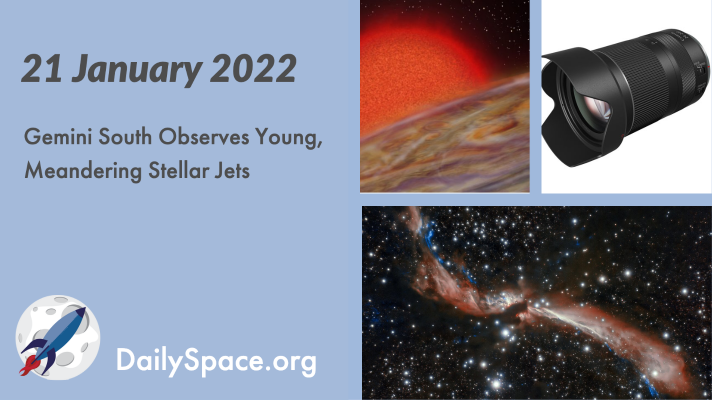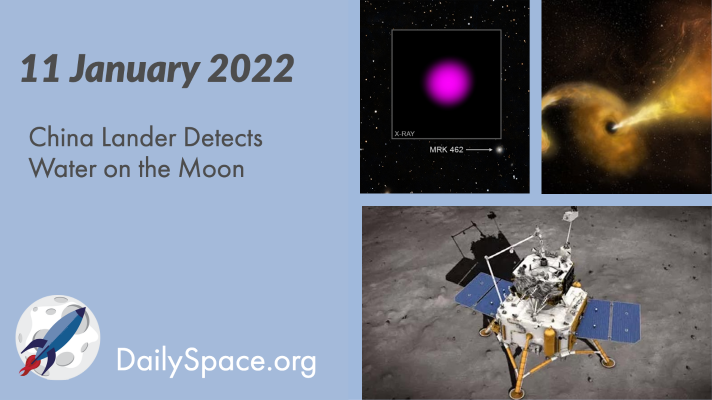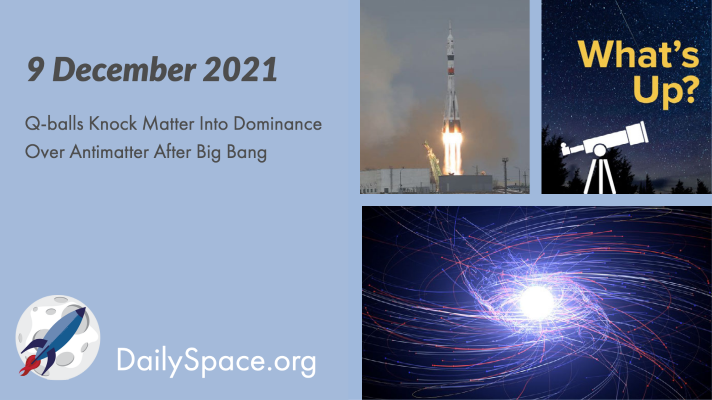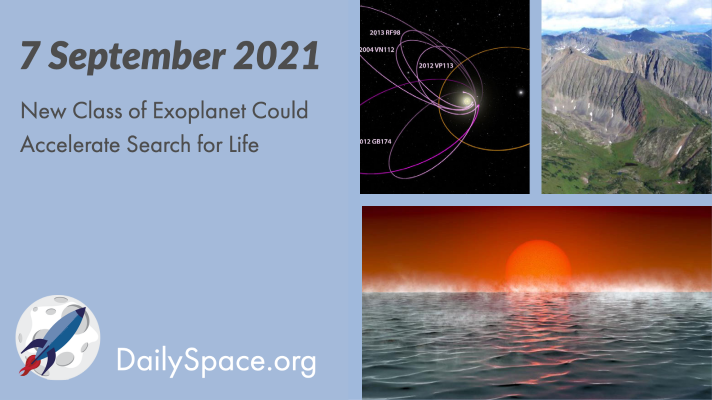
Jan 24, 2022 | Brown Dwarf, Daily Space, Exoplanets, Galaxies, Gemini South, JWST, Review, Spacecraft, Starlink, Stars, Very Large Array
The Gemini South Observatory, using adaptive optics, has captured stunning new images of meandering stellar jets. The sidewinding appearance is likely caused by the gravitational influences of nearby companion stars. Plus, exoplanet news and a review of a Canon lens.

Jan 12, 2022 | Cosmology, Daily Space, Galaxies, JWST, Milky Way, Moon, Supermassive Black Holes, Supernovae, Very Large Array
China’s Chang’e-5 lunar lander has made the first in situ detection of water on the Moon, using reflectance spectroscopy from the surface of our natural satellite. Plus, all the news from the AAS virtual press conferences, including black holes and galaxies.

Dec 10, 2021 | Asteroids, Cosmology, Crewed Space, Daily Space, Exoplanets, Galaxies, Gemini South, Guest Interview, Rockets, ROSCOSMOS, Sky Watching, Soyuz, Spacecraft, Very Large Array
Researchers hypothesize that blobs in post-Big Bang fields of energy, known as Q-balls, could explain how matter came to dominate over antimatter in our Universe, and they plan to use gravitational waves to find their evidence. Plus, a crewed launch to the ISS features Japanese tourists, NASA selects the latest astronaut class, and What’s Up is the Geminids.

Dec 8, 2021 | Asteroids, Daily Space, Dark Matter, Earth, ESA, Galaxies, JWST, Moon, Spacecraft, The Sun, Very Large Array
Astronomers using the Very Large Array in New Mexico spent 40 hours observing galaxy AGC 114905, which seemed to have little to no dark matter in 2019 observations. The new evidence shows there is no dark matter in the galaxy at all. Plus, more Hubble and JWST updates, an eclipse over Antarctica, and an interview with Dr. Franck Marchis about citizen science.

Sep 8, 2021 | Asteroids, Astrobiology, Climate Change, Daily Space, Earth, Exoplanets, Galaxies, Mars, Neutron Stars / Pulsars, Our Solar System, Perseverance, Supermassive Black Holes, Supernovae, Very Large Array
Hycean worlds have hydrogen-rich atmospheres and are covered in oceans, making them prime candidates for the search for life outside our own solar system. These worlds are also more numerous and easier to find than Earth-like exoplanets. Plus, an update on the search for Planet 9 and how volcanoes may provide a climate safety valve.

May 7, 2021 | Active Galaxies, Earth, Exoplanets, Moon, Spacecraft, Star Forming Region, Supernovae, Very Large Array
Researchers find that the “oddball supernova” of a curiously cool, yellow star was lacking the hydrogen content expected, “stretching what is physically possible.” Plus, finding potentially habitable planets, a gamma-ray burst, ash clouds, and a new lunar map in this week’s What’s Up.








 We record most shows live, on Twitch. Follow us today to get alerts when we go live.
We record most shows live, on Twitch. Follow us today to get alerts when we go live.